Ethereum uses a blockchain, which is a distributed ledger (like a database). Information is stored in blocks, each containing encoded data from the block before it and the new information. This creates an encoded chain of information that cannot be changed. Throughout the blockchain network, an identical copy of the blockchain is distributed. With EIP-1559, this process is handled by an automated bidding system, and there is a set “base fee” for transactions to be included in the next block.
- Your wallet has an address, which can be thought of as an email address in that it is where users send ether, much like they would an email.
- Neither of these issues were addressed by the update and remain a blocker to expanded adoption.
- In 2016, Ethereum underwent a controversial hard fork to escape a serious hack, called the DAO hack, that took place on the network.
- The layer is responsible for validating transactions, adding new blocks, and ensuring all nodes follow the same rules.
They have been created for many uses, from Web 3 development to gaming and venture capital. The applications you may use in the metaverse, such as your wallet, a dApp, or the virtual world and buildings you visit, are likely to have been built on Ethereum. For example, sports fans can buy a sports token—also called fan tokens—of their favorite athletes, which can be treated like trading cards.
Ether and Ethereum: What’s the Difference?
You weren’t sure, so you asked your neighbor and they didn’t know, either! It’s okay, though — this guide is going to tell you everything you need to know about one of the world’s most exciting cryptocurrency – Ethereum. Smart contracts are like digital “if-then” statements which can be synced with external databases — if a condition of the contract is met then the agreement is approved. There are different guidelines or standards to follow in order to create a token on Ethereum to ensure they are compatible with online Exchanges such as the Blockchain.com Exchange.
Once a smart contract is published to Ethereum, it will be online and operational for as long as Ethereum exists. Since smart contracts are automated, they do not discriminate against any user and are always ready to use. Play to earn games (where players are actually rewarded for playing the games) have recently emerged and are transforming the gaming industry. Traditionally, it is often prohibited to trade or transfer in-game assets to other players for real money.
Who runs Ethereum?
From the development of the whitepaper, many other co-founders joined his vision, including Gavin Wood and Charles Hoskinson. The Ethereum network is like a large, powerful, decentralized computer. In the previous section, we discussed the different layers of the Ethereum mainnet and introduced the idea of a rollup-centric roadmap. Let’s dive deeper into this topic to understand Ethereum’s evolution and how it addresses scalability challenges.
Non-fungible tokens (NFTs)
Gas fees, which measure the computational work required for transactions, are paid to validators in Ether. These validators, the participants who verify and secure transactions on the network, earn ETH in return for their work. For example, if you initiate a transaction or interact with a smart contract, a small amount of Ether is paid as gas, compensating validators and ensuring the network runs smoothly. On https://www.pinterest.com/pin/1041598220073405471/, Ether is more than just a currency—it’s also a network exchange medium.
Ethereum statistics
Migration paths to quantum-resistant cryptography (e.g., via post-quantum signature schemes) need to be designed, tested, and possibly embedded in the protocol years before they are needed. Organizations across the Ethereum ecosystem, including the Ethereum Foundation, are actively exploring these options and monitoring risks. Ethereum’s fork choice and finality rules are resilient, but they are not invulnerable. During certain edge case conditions (like prolonged validator disagreement, client bugs, or network partitions) consensus could stall or temporarily diverge. In extreme conditions, this could lead to cascading validator penalties through inactivity leaks or slashing, which could further lead to capital flight from validators.

Αφήστε ένα σχόλιο